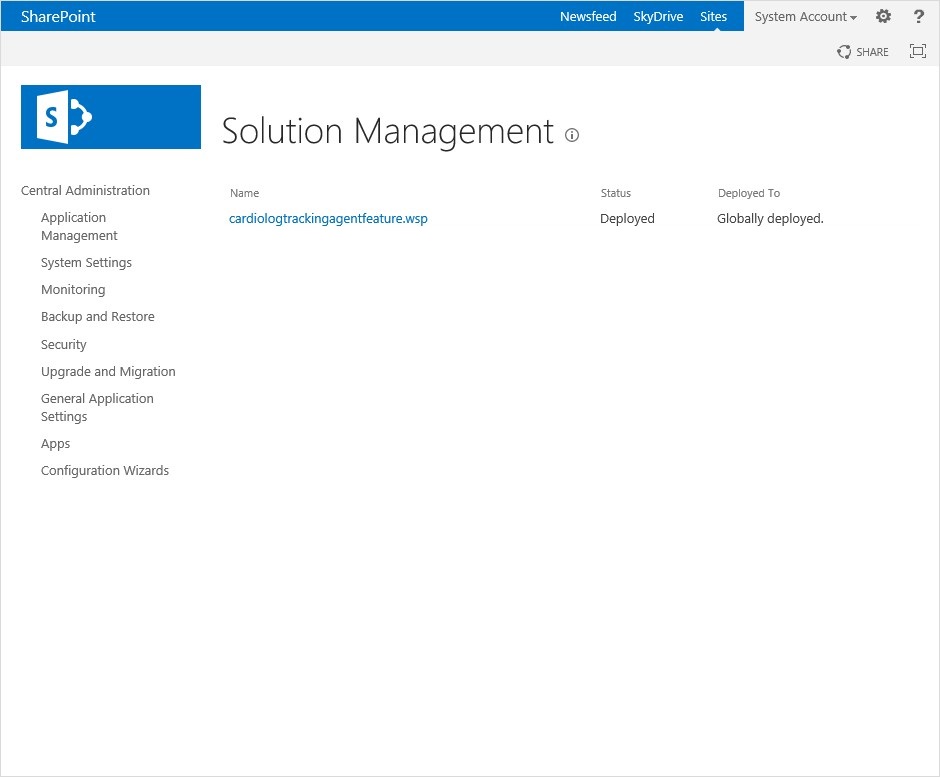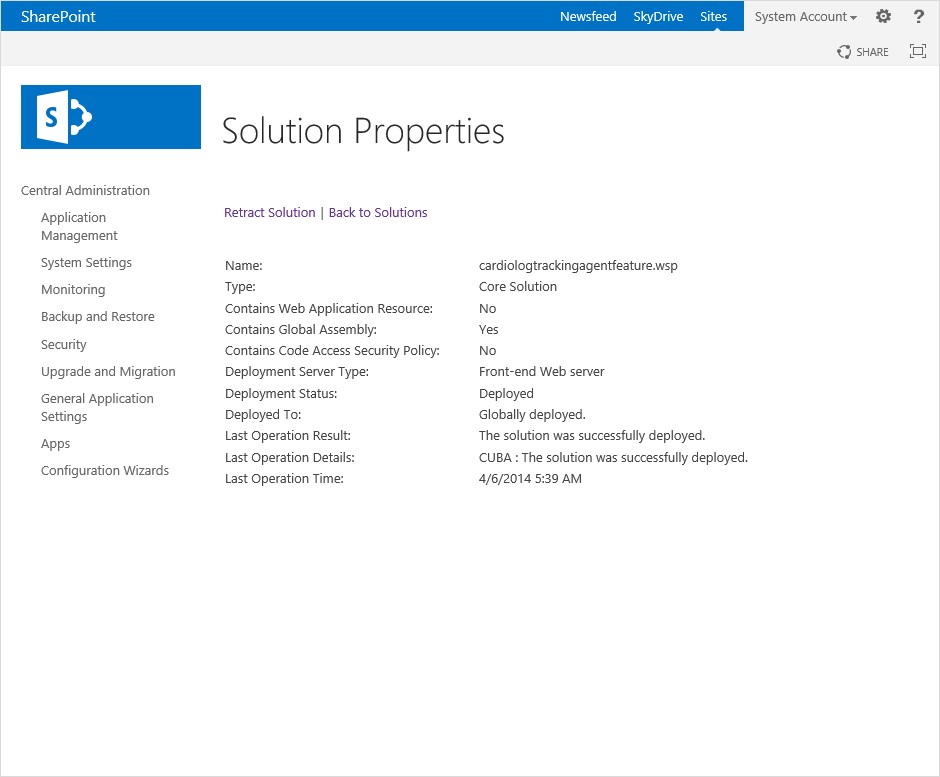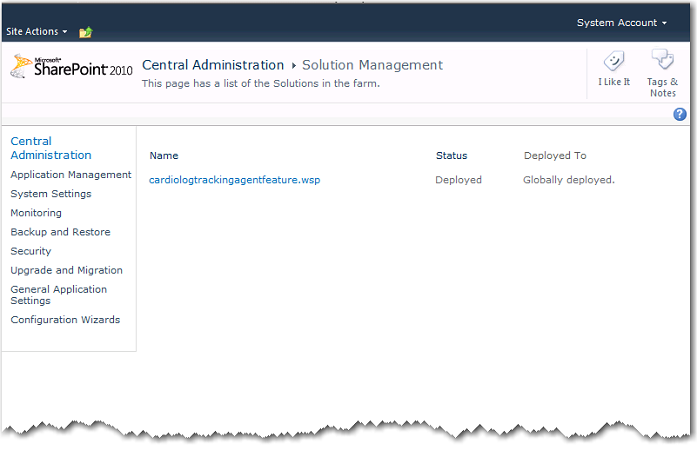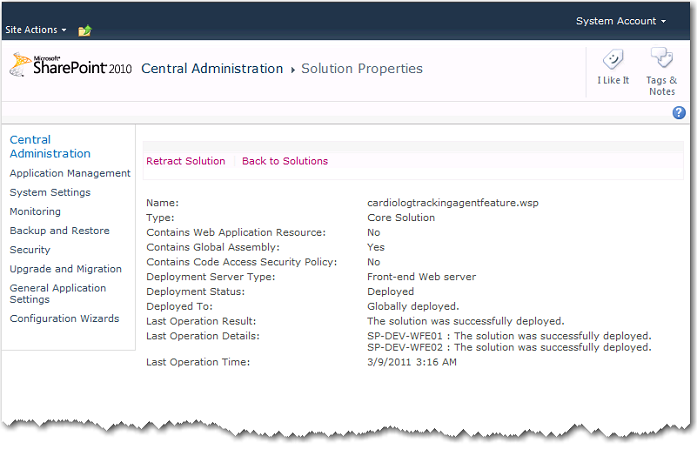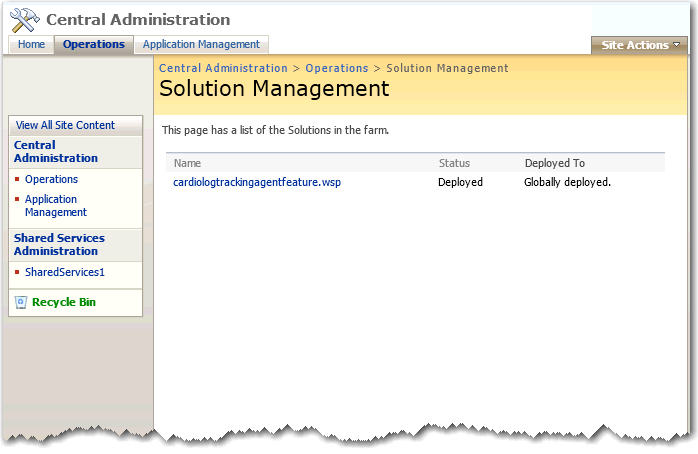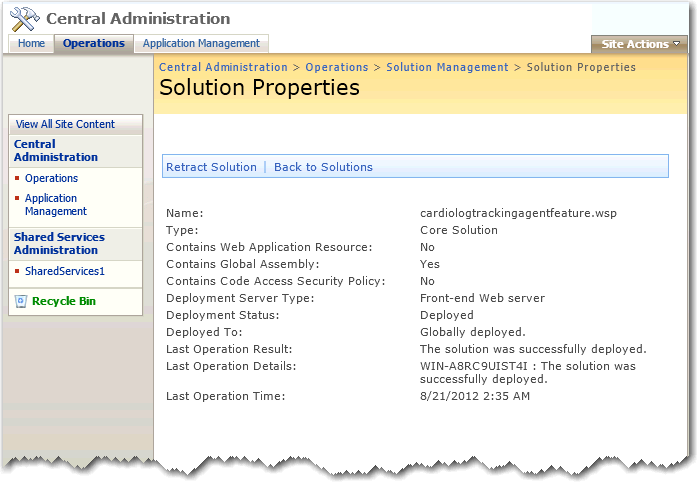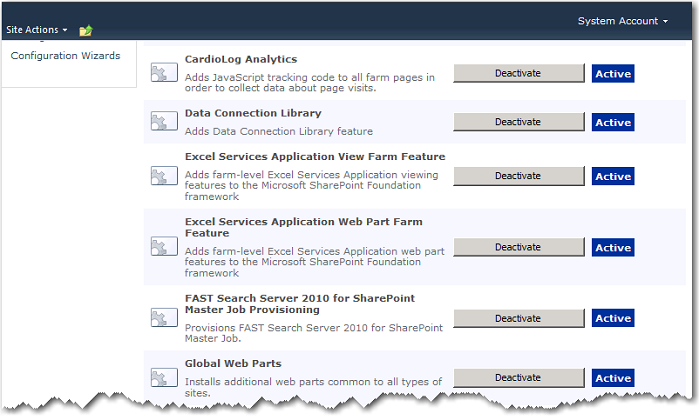Contents
Running the Configuration Wizard
Upon activating CardioLog, the Configuration Wizard will be displayed. This wizard will help you configure the SharePoint Tracking Agent, a tool designed to monitor visitor behavior in SharePoint, and the SharePoint Adaptor, which configures the structure for your SharePoint portal. Additionally you can start the wizard at any time to reconfigure your system by going Administration in the navigation pane and opening System Configuration. Select Configuration Wizard to initialize the system.
Login to the CardioLog server with your CardioLog service account and verify that it has the required permissions before running the wizard.
Please review this entire section before running the Configuration Wizard in order to determine the tracking mechanism that should be deployed. If you choose to deploy The CardioLog Analytics SharePoint feature, the wizard should run with SharePoint administrator privileges.
- Launch CardioLog.
- In the Welcome dialog, select the desired interface language and date format, and your SharePoint version, then click Next.
Configuration Wizard Step 1 Step 2 of the Configuration Wizard, SharePoint Online Usage Tracking, can be performed either automatically or manually. Please select only one option to configure the Tracking Agent.
Configuration Wizard Step 2a
- Click Next to continue, which will start the event collection test.
Configuration Wizard Step 2 Installation - Follow the steps listed and click Next Step upon completing each instruction in the dialog.
Deploying the 'CardioLog Analytics' SharePoint Feature
CardioLog provides a streamlined solution (cardiologtrackingagentfeature.wsp) for installing the JavaScript tracking code on all of your SharePoint farm pages. This SharePoint solution includes a farm-scoped feature named CardioLog Analytics, which can be activated or deactivated using SharePoint's Central Administration.
Note: Confirm that you have administrator permissions for your SharePoint farm, SharePoint application server and Web Front End server before configuring your servers.
- In the Usage Tracking dialog, select "Yes, install and activate CardioLog Analytics SharePoint Feature" and enter the SharePoint application server machine name:
Step 2 - Usage Tracking - Click Next to continue.
Wait while the wizard installs the cardiologtrackingagentfeature.wsp solution file, deploys the solution throughout all web front ends, and activates the CardioLog Analytics feature. If this step fails, please see "CardioLog Analytics" SharePoint Feature Manual Installation Procedure.
To confirm the solution has deployed properly, go to SharePoint 2013, and navigate to Central Administration > System Settings > Manage farm solutions
SharePoint 2013 - Solution Management
In the Solution Properties window, click cardiologtrackingagentfeature.wsp and verify that the solution was successfully deployed to all web front ends.SharePoint 2013 - Solution Properties
To view the deployed solution in SharePoint 2010, go to Central Administration > System Settings > Manage farm solutions
SharePoint 2010 - Solution Management
In the Solution Properties window, click cardiologtrackingagentfeature.wsp and verify that the solution was successfully deployed to all web front ends.
SharePoint 2010 - Solution Properties
To view the deployed solution in MOSS 2007, go to Central Administration > Operations > Solution Management
MOSS 2007 - Solution Management
In the Solution Properties window, click cardiologtrackingagentfeature.wsp and verify that the solution was successfully deployed to all web front ends.
MOSS 2007 - Solution Properties
Activate/Deactivate Data CollectionThe CardioLog Analytics feature is automatically activated and starts data collection immediately upon installation. The CardioLog Analytics solution may also be manually deactivated and reactivated.
Warning: Deactivating the solution will stop all data collection until reactivated.
To deactivate the CardioLog Analytics feature in SharePoint 2013, go to Central Administration > System Settings > Manage farm features
SharePoint 2013 - Manage farm featuresTo deactivate the CardioLog Analytics feature in SharePoint 2010, go to Central Administration > System Settings > Manage farm features
SharePoint 2010 - Manage farm features
To deactivate the CardioLog Analytics feature in MOSS 2007, go to Central Administration > Operations > Manage farm features
MOSS 2007 - Manage farm features
Note: The CardioLog Analytics SharePoint Feature will work only for master pages which contain the following control in the head section:<SharePoint:DelegateControl runat="server" ControlId="AdditionalPageHead" AllowMultipleControls="true"/>
This control is included in the master pages for all SharePoint templates, except the MOSS 2007 Publishing Site master page. Add this control to all MOSS 2007 Publishing Site master pages, right before the closing </HEAD> tag. Alternatively, you can also use a top master file, which is included in all of the Publishing Sites master pages, in order to perform a single update.
Automatically add the JavaScript tracking code
Notes: This step should be done for each WFE. The CardioLog service account must have write permissions to the SharePoint template directory:
[SharePoint 2013 Server]\%PROGRAMFILES%\Common Files\Microsoft Shared\web server extensions\15\TEMPLATE
[SharePoint 2010 Server]\%PROGRAMFILES%\Common Files\Microsoft Shared\web server extensions\14\TEMPLATE
[SharePoint 2007 Server]\%PROGRAMFILES%\Common Files\Microsoft Shared\web server extensions\12\TEMPLATE
In the Usage Tracking dialog, select "Yes, add the tracking code to my SharePoint INIT.JS files" and enter the SharePoint WFE server names, to allow CardioLog to automatically add the tracking code to all SharePoint pages served by the all the WFEs in your farm (the tracking code is added to init.js in SharePoint 2010 and SharePoint 2013, and core.js in SharePoint 2007).
Note: If your SharePoint website runs on SSL, you will have to create a certificate for the CardioLog website and configure it to enable SSL. Alternatively, you can install the CardioLog Analytics SharePoint Feature.
See how to configure the Tracking Agent with SSL for more details.Step 2 - Usage Tracking Installation Options
- Click Next to continue.
Manually Add a JavaScript tracking Code
If you wish to add the tracking code yourself - select "No, I will add the tracking code myself." and copy the JavaScript tracking code to a common page component of your choice, including master pages, page toolbars, Web Parts, headers or footers. If you choose a common JavaScript (.js) file, verify you have removed the opening and closing <script> tags!
In order to test the tracking agent, follow these steps:
- Open a new browser window and click Next Step.
- Delete your browser temporary internet files and click Next Step.
- Browse through at least 3 pages on your SharePoint website and click Next Step.
- Click Test Event Collection.
- In the SharePoint Adaptor dialog, enter the SQL server instance name and the SharePoint configuration database name for your farm. Specify the authentication method used to connect to the database, then click Next.
Note: In order to edit the tracking code, you will need to be assigned the SharePoint Administrator role in Office 365 Admin Center, found under Customized Administrator when editing User Roles in MS Office 365.
Step 3 - SharePoint Adaptor - In the SharePoint Adaptor dialog, select the SharePoint website(s) you would like to report on.
- Enter the name of one of your SharePoint Web Front Ends, then click Next.
Note: Loading your SharePoint tree structure may take several minutes, depending on the number of items in the selected web sites.
Step 3 - SharePoint Adaptor Web Site Selection - In the SharePoint Adaptor dialog, expand the web site tree and verify that it shows your desired SharePoint web application, then click Next.
- In the Usage Data Processing dialog, wait until the CardioLog Scheduling has activated, then click Next.
- In the Finish dialog, you should be created with a confirmation that everything has been properly configured, and then you can click Finish. Click Show Raw Usage Data to view the usage events collected thus far. All data will be available in reports within the next hour.
- Assign roles for users.
- Configure email alerts for scheduled services and event collection thresholds that will be sent to the administrator.
- Configure the Active Directory Update Service in order to segment authenticated visitors by their user names and their groups.





